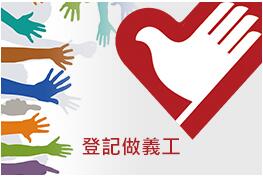
Pulmonary Arterial Hypertension
Name of disease:
Pulmonary Arterial Hypertension (PAH)ICD-10 diagnosis code:
I27.21Causes:
Pulmonary arterial hypertension (PAH) is one form of a broader condition known as pulmonary hypertension, which is high blood pressure in the lungs. In PAH, this increased pressure in the vessels is caused by obstruction in the small arteries in the lung for a variety of reasons.
Causes of PAH include idiopathic which is of unknown cause; heritable PAH due to gene mutation; or PAH associated with certain drug use or diseases, for example connective-tissue-diseases which include systemic lupus erythematosus and scleroderma, etc.
Mode of inheritance:
The exact cause of PAH remains unknown. Approximately 15-20% of patients with PAH have heritable forms of PAH. People with heritable PAH have either:
(1) an autosomal dominant genetic condition associated with mutations in the BMPR2 gene or other recently identified genes now associated with HPAH or other forms of PAH or associated conditions such as pulmonary capillary hemangiomatosis or pulmonary veno-occlusive disease, or;
(2) are members of a family in which PAH is known to occur as primary disease.
Prevalence:
3.7 cases per 100000 adult inhabitantsDiagnosis:
Right heart catheterization.
Other tests include:- Echocardiography,
- Blood tests
- Cardiac computerized tomography
- Pulmonary function tests
- Electrocardiography(ECG or EKG)
- X-ray
Age of onset:
At any age, including in children, and the diagnosis tends to increase with age.Common signs and symptoms:
- Dyspnea (Shortness of breath)
- Malaise (Whole body exhausted)
- Fatigue
- Exercise intolerance
- Chest pain
- Syncope
- Dizziness
- Palpitations
Available treatments (medicinal and non-medicinal):
Although there is no cure for PAH, there are medications and procedures that can slow the progression of the disease and improve patients' quality of life.
Specific therapeutic drugs:
There are three categories of specific therapeutic drugs, each targeting different pathways to treat PAH. Depending on the patient's condition, doctors may use these drugs individually or in combination.
- Phosphodiesterase-5 inhibitors: inhibit the enzyme phosphodiesterase-5, which breaks down cyclic guanosine monophosphate (cGMP), a molecule involved in relaxing smooth muscle and dilating blood vessels. By increasing levels of cGMP, these medications help to reduce pulmonary artery constriction.
- Endothelin receptor antagonists: target the endothelin pathway to block the effects of endothelin, a substance that constricts blood vessels. By inhibiting endothelin receptors, these drugs promote vasodilation and improve blood flow in the pulmonary arteries.
- Prostacyclin analogs: Prostacyclin analogs, are potent vasodilators that help to relax and widen the blood vessels in the lungs, reducing pulmonary arterial pressure.
Other traditional therapeutic drugs:
- High dose calcium channel blockers: Drugs such as diltiazem and nifedipine are vasodilators which open up blood vessels. But they only benefit certain patients.
- Anticoagulation: help prevent blood clots from forming in blood vessels, but may increase the risk of bleeding and complications.
Disease management tips:
Patients with PAH should adopt lifestyle changes to maintain their health, including:
- Quitting smoking
- Maintaining a healthy weight
- Avoiding rigorous activities, such as weightlifting, that can put excessive strain on your lungs and heart
- Refraining from traveling to high altitudes
- Avoiding activities that may lead to exhaustion, as this can help alleviate symptoms
References:
Other useful websites:
https://skypost.hk/article/3722696/
https://phacanada.ca/Community/Find-Support/Online-Support-Groups
This page is contributed by Johnson & Johnson.



